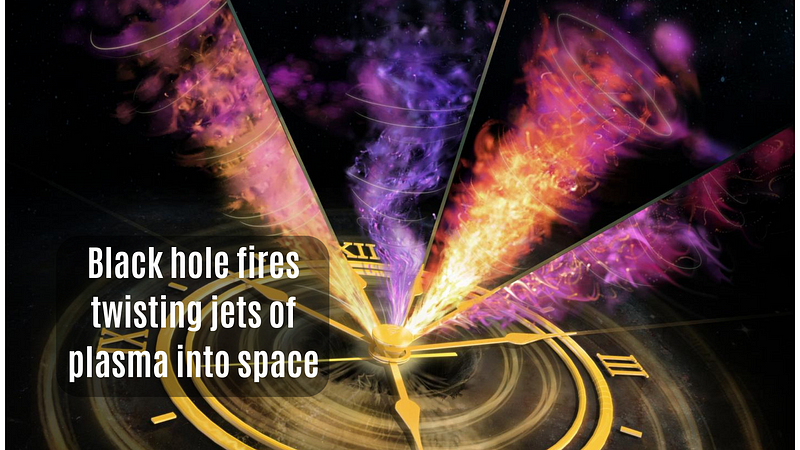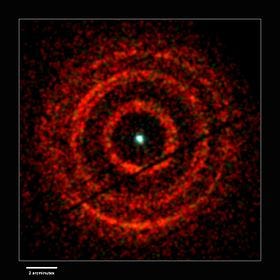Exploring the Mysteries of V404 Cygni: A Unique Black Hole
Written on
Chapter 1: V404 Cygni's Extraordinary Jets
Recent studies have unveiled intriguing jets of plasma emanating from a black hole located approximately 8,000 light-years from Earth. This groundbreaking research, published in Nature, highlights the unprecedented behavior of jets from the V404 Cygni black hole, particularly on remarkably short timescales.
These findings reveal a new perspective on black hole dynamics, suggesting complex interactions within their environments.
Section 1.1: Understanding the Jet Mechanism
The binary star system of V404 Cygni includes a typical star orbiting a black hole. Matter from the star spirals into the black hole, forming an accretion disk and producing powerful jets that are expelled from the inner region near the black hole (ICRAR).

These jets are believed to be rapidly oscillating, with high-velocity plasma clouds being ejected in various directions, sometimes just minutes apart. Associate Professor James Miller-Jones from Curtin University, a member of the International Centre for Radio Astronomy Research (ICRAR), emphasizes the extreme nature of such black holes, stating, "This is one of the most remarkable black hole systems I've encountered."
Section 1.2: The Historical Context of V404 Cygni
V404 Cygni was first recognized as a black hole in 1989 after it generated a significant outburst of jets and radiation. Observations dating back to 1938 and 1956 have documented previous eruptions. Miller-Jones notes that the current behavior of V404 Cygni could be attributed to a misalignment between the disk of material and the black hole itself.
“This misalignment seems to cause the inner disk to wobble like a spinning top, resulting in jets being emitted in various directions as the orientation shifts,” he explains.
Chapter 2: Observational Breakthroughs
In 2015, V404 Cygni experienced a brilliant outburst lasting two weeks, prompting astronomers worldwide to focus their telescopes on the event. This collaborative effort yielded an extensive dataset for analysis.
Largest black hole jet discovered stretches 23 million light years - YouTube: This video elaborates on the discovery of a massive black hole jet extending an astonishing distance, providing insights into the mechanics of such phenomena.
The unique behavior of V404 Cygni's jets became evident when Miller-Jones and his team observed that they did not follow the traditional pattern of being emitted straight from the poles. Instead, the jets were observed changing direction rapidly, sometimes within mere hours.
Section 2.1: The Role of the Accretion Disk
Miller-Jones points out that the shifting movement of the jets is influenced by the accretion disk, a rotating mass of extremely hot material encircling the black hole before it falls in. The disk surrounding V404 Cygni spans 10 million kilometers, and during the bright outburst, the inner region was observed to be ‘puffed up’ and wobbling.

Miller-Jones further explains, "The inner part of the accretion disk was precessing — altering its angular orientation — effectively dragging the jets along with it. Imagine the wobble of a spinning top as it slows down; in this instance, the wobble is a consequence of Einstein’s general relativity."
Black Holes' Tempests Twist Their Tails | Video - YouTube: This video delves into the chaotic dynamics of black holes, focusing on their unpredictable nature and the implications for astrophysics.
Section 2.2: Advanced Observational Techniques
The research utilized data from the Very Long Baseline Array (VLBA), an extensive radio telescope system across the U.S., from the Virgin Islands to Hawaii. Co-author Alex Tetarenko, a recent PhD graduate, notes the necessity for innovative observational strategies due to the rapid changes in the jets.
"Typically, radio telescopes compile a single image over several hours of observation. However, due to the jets’ swift changes, a four-hour image resulted in a mere blur," she explains. Instead, the team created 103 individual images, each lasting about 70 seconds, and compiled them into a cohesive movie.
Tetarenko concludes, "This approach enabled us to capture these rapid changes over a very brief period."
Dr. Gemma Anderson, also from ICRAR, suggests that the wobble observed in the inner accretion disk could potentially occur in other extreme cosmic events. "Whenever there's a misalignment between a black hole's spin and the material infalling, we could witness similar phenomena during rapid feeding events," she states. "This could also apply to various explosive cosmic events, such as supermassive black holes consuming matter quickly or tidal disruptions when a black hole tears apart a star."
Original research: http://dx.doi.org/10.1038/s41586-019-1152-0